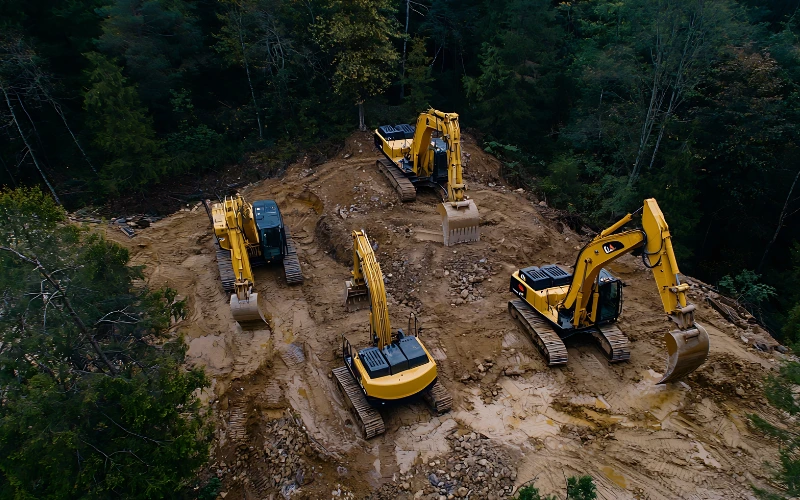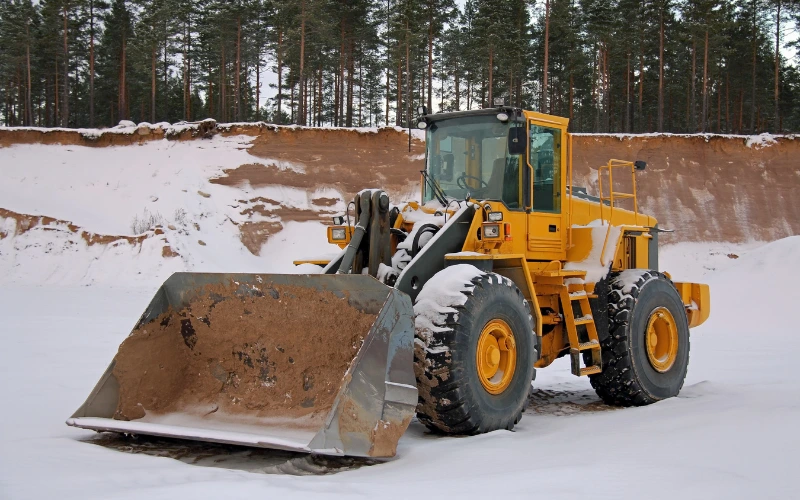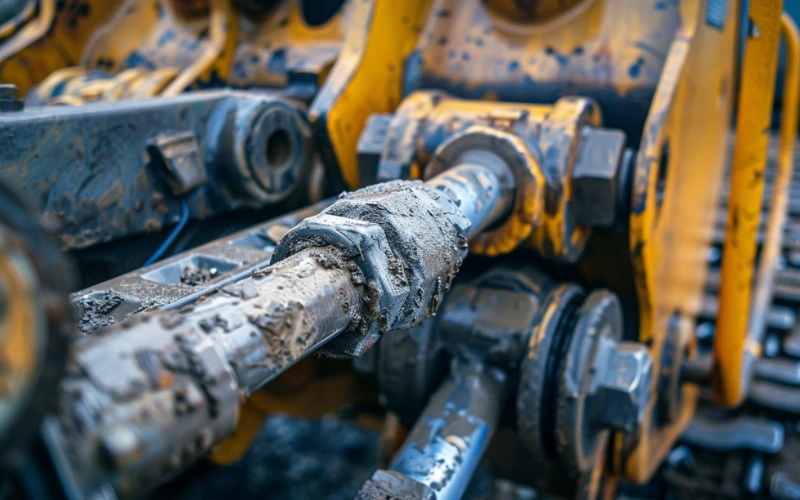Choosing the Right Fluids & Lubricants for Heavy-Duty Equipment
24 Jul 2025

Have you ever experienced equipment grinding to a halt mid-project? It’s often due to using the wrong fluids or not maintaining them properly.
Heavy-duty equipment—like excavators, loaders, and off-road machinery—faces constant pressure from heavy loads and harsh conditions. If it isn’t lubricated properly, it can lead to early wear, unexpected downtime, and costly repairs.
In this blog, we will cover why using the right heavy-duty lubricants is essential for maintaining the lifespan of your machinery.
Why choosing the right fluid matters
The fluids you use to maintain heavy-duty equipment can have a huge impact on machine performance and lifespan. Using the right lubricants and fluids can:
- Enhance performance and extend lifespan
- Minimise long-term costs with preventative maintenance
- Reduce equipment downtime by scheduling fluid checks and regular maintenance
- Help you adhere to local environmental regulations
However, using the wrong lubricants and fluids can have a detrimental impact on the longevity and efficiency of your equipment. This can lead to unplanned equipment breakdowns, repairs and project delays that could have been prevented.
Common mistakes to avoid
One size does not fit all when choosing the right lubricants for heavy-duty equipment. In fact, if you use the wrong lubricants or use them incorrectly, it can impact on safety, costs and project timelines. Here are some mistakes to avoid:
Using general-purpose lubricants for specialised equipment: Heavy-duty equipment requires heavy-duty lubricant, so universal or general-purpose lubricants just won’t do. The extra pressure on vehicles and machinery can lead to reduced performance, early wear and tear, engine or component failure or overheating if the correct lubricants are not used.
Ignoring OEM recommendations: Recommended service intervals exist to prevent friction between moving parts which can reduce the lifespan of equipment and make it unsafe to use. Ignoring manufacturer recommendations can also impact warranties and slow down projects due to unplanned downtime.
Mixing incompatible fluids: While some fluids are compatible, you should not mix fluids (especially with different viscosities or compositions) from different brands. Mixing incompatible fluids can cause serious problems, like shorter oil life, corrosion, or even valve failure.
Overlooking seasonal requirements: Adapting to changes in seasons and climates is particularly important when managing heavy-duty equipment like construction, industrial and agricultural machinery. In warmer climates, higher-viscosity oils maintain film strength under high heat. In colder conditions, lower-viscosity oils flow more easily during start-up, ensuring faster protection.
By avoiding these mistakes, you can extend the lifespan of your machinery and prevent equipment breakdowns.

Choosing the best hydraulic oil for construction equipment
Construction equipment is under constant strain and pressure from harsh weather conditions and managing heavy loads. That’s why you need the best hydraulic oil for construction equipment to ensure it operates smoothly.
Key qualities to look for in hydraulic oil
High-quality hydraulic oil is essential for reliable, long-term performance. Here are some of the qualities you should look for when choosing a hydraulic oil:
- Thermal stability - Hydraulic oil should be able to withstand high temperatures without degrading to prevent sludge formation
- Anti-wear properties - It should provide thermal and oxidative stability while reducing friction between moving parts
- Oxidation resistance - This prevents oil degradation as well as maintaining long-term performance
Mineral vs. synthetic oil
Mineral oils, derived from crude oil, are typically more affordable but offer less stability and shorter service life under extreme conditions. Synthetic oils, while more expensive, deliver superior thermal performance, oxidation resistance, and extended drain intervals.
Learn more about the difference between synthetic and mineral oil.
Seals and component compatibility
Your hydraulic oil must be compatible with seals and components to reduce the chance of premature failure and ensure systems function correctly. If your hydraulic fluid is not compatible with your seals, you might experience:
- Leaks
- Swelling
- Shrinkage
Essential lubricants for heavy-duty equipment
Heavy-duty machinery requires speciality lubricants and fluids to operate efficiently under extreme conditions, and hydraulic oil is just one piece of the puzzle. Here are some examples of lubricants you can expect to use in most heavy-duty equipment.
|
Type of lubricant |
Application |
|
Engine oils |
Lubricates the moving parts in the engine to reduce friction and help it run smoothly |
|
Transmission fluids |
Ensures smooth gear changes, lubricates moving parts in the transmission system and prevents overheating |
|
Lubricate the gears in manual gearboxes, protecting them from wear, tear, heat and friction |
|
|
Greases |
Reduce friction, protect parts against corrosion and reduce wear and tear |
|
Coolant |
Regulates the engine temperature to prevent overheating |
Lubricants and fluids are designed to reduce friction and prolong the lifespan of equipment, so using the correct heavy-duty lubricant for the correct part of the machinery is essential for smooth operation.
Always ensure fluids and lubricants align with OEM specifications to avoid performance issues and protect warranties.

3 tips for maximising fluid efficiency in off-road vehicles
Properly maintaining fluids and lubricant levels is key to prolonging the lifespan of off-road vehicles and ensuring they operate efficiently. Now we’ve covered the types of fluid you need, here’s how you can manage them to improve efficiency:
-
Stay ahead of breakdowns by monitoring fluids
Advanced lubrication technology gives fleet managers real-time insights into fluid levels and quality so they can be maintained properly to prevent unplanned breakdowns and repairs.
-
Follow best practices for storage and handling
Use a first-in, first-out system for lubricant storage to use up the oldest fluid first. Fluids should also be stored in a cool, dry place in a horizontal position, and well away from humid or dusty conditions. Read our tips on lubricant storage.
-
Schedule fluid change intervals and follow a condition-based maintenance plan
Follow the manufacturer’s guidelines for fluid changes to keep your equipment running smoothly. By using a condition-based maintenance plan, you can assess the condition of the fluid and top it up if it is not contaminated, rather than replacing it, to reduce costs and avoid waste.
Using the right fluids (and managing them correctly) protects your equipment, avoids costly breakdowns, and keeps your projects running on time. Not only that, but scheduling regular fluid checks can ensure that your machinery is operating safely and efficiently.
Ready to reduce downtime and improve performance? Discover how our industrial lubricants can to effectively maintain your machinery.

